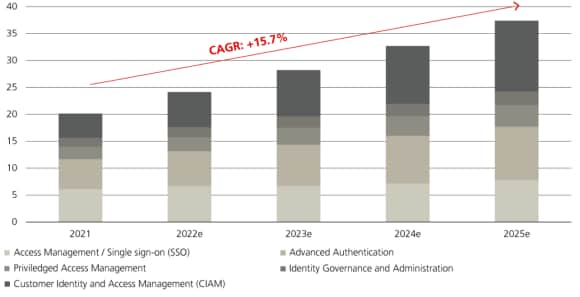Identity and access management: guardians of the digital front door
The evolving threat environment and the digitization of our society make IAM a central component of any IT security architecture. The market for IT security is an attractive multiyear secular growth theme.





